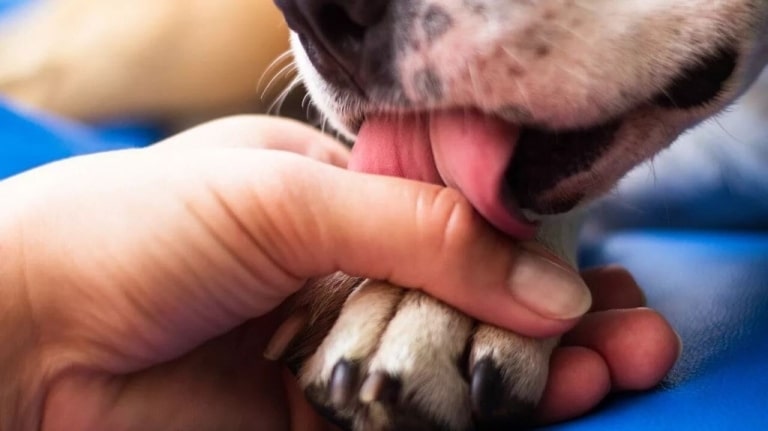Vomiting in dogs is a fairly common phenomenon that can happen to any pet, regardless of breed or age. However, the causes of vomiting can be varied: from harmless to very serious. In order to protect your dog from possible dangers and provide the right help, it is important to understand why this can happen and how to act in such a situation.
In this article, we will answer the most popular questions of owners about nausea in dogs: the dog does not eat, only drinks water, the dog vomits without diarrhea, what to do if the dog does not eat and vomits, medicine for poisoning for dogs.

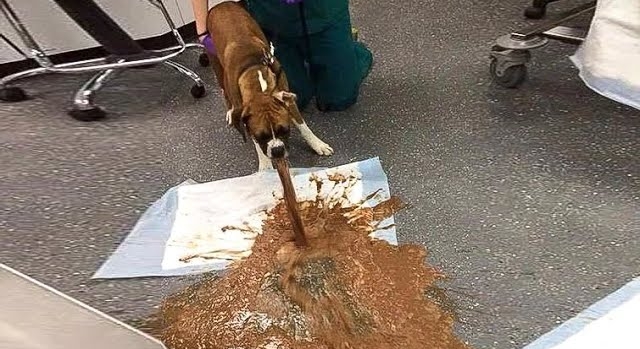
Symptoms of nausea and how to avoid vomiting
Nausea is often a precursor to vomiting, but if you detect its symptoms in time, you can help your pet avoid further trouble. Signs of nausea in dogs can manifest in different ways, but every owner should know the main ones:
- Frequent lip licking. This is a natural reflex that helps the dog cope with excessive salivation that occurs when nausea occurs.
- Increased salivation. During nausea, the body begins to produce more saliva.
- Restlessness or anxiety. The dog may behave restlessly: walking in circles, often changing its position or whining, trying to find a comfortable place.
- Rejection of food. Appetite disappears almost immediately when feeling sick.
- Abdominal muscle contraction. If you can see how the abdominal muscles are tensing, this may be a sign that the dog is preparing to vomit.
- Shaking or tremors. Some dogs start shaking from nausea. Even slight tremors are noticeable when the pet is sitting or lying down.
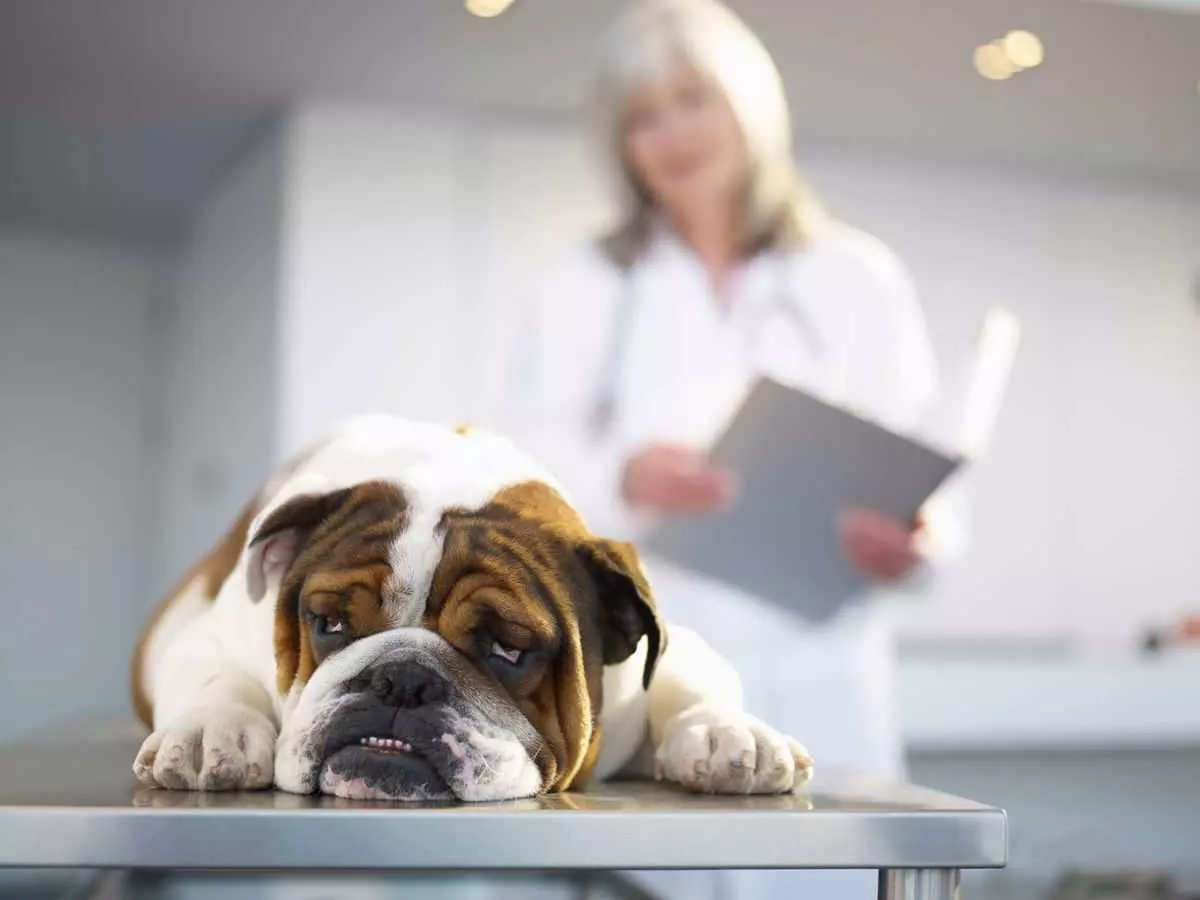
If you recognize these symptoms in time, there are several simple but effective ways to help your dog:
- Provide peace of mind. Create a quiet, cozy environment, without loud sounds and activities. The dog needs rest to recover.
- Remove food and water. In moments of nausea, it is best to remove food and water for several hours, allowing the stomach to rest. Then you can gradually give small portions of water.
- Watch your diet. A regular, balanced diet can significantly reduce the risk of nausea. Choose foods that match your dog’s age and needs. Avoid sudden changes in diet. This should be done gradually, adding new food in small portions.
- Control portions. Overeating or absorbing food too quickly often causes nausea. If your dog has this tendency, divide his portions into smaller portions or use special mats/bowls for slow feeding.
- Avoid swallowing foreign objects. Dogs love to explore everything around them. This can lead to the ingestion of dangerous objects that not only cause nausea, but also serious gastrointestinal problems. Always watch what the dog picks up during walks.
- Visit your vet regularly. If your dog’s nausea becomes regular or you can’t find the cause, don’t delay a visit to the vet. The specialist will conduct an examination and will be able to rule out such serious diseases as gastritis, parasites or liver problems.
Knowing these simple but important steps will help you quickly react to the first signs of nausea in your pet and protect him from further complications.
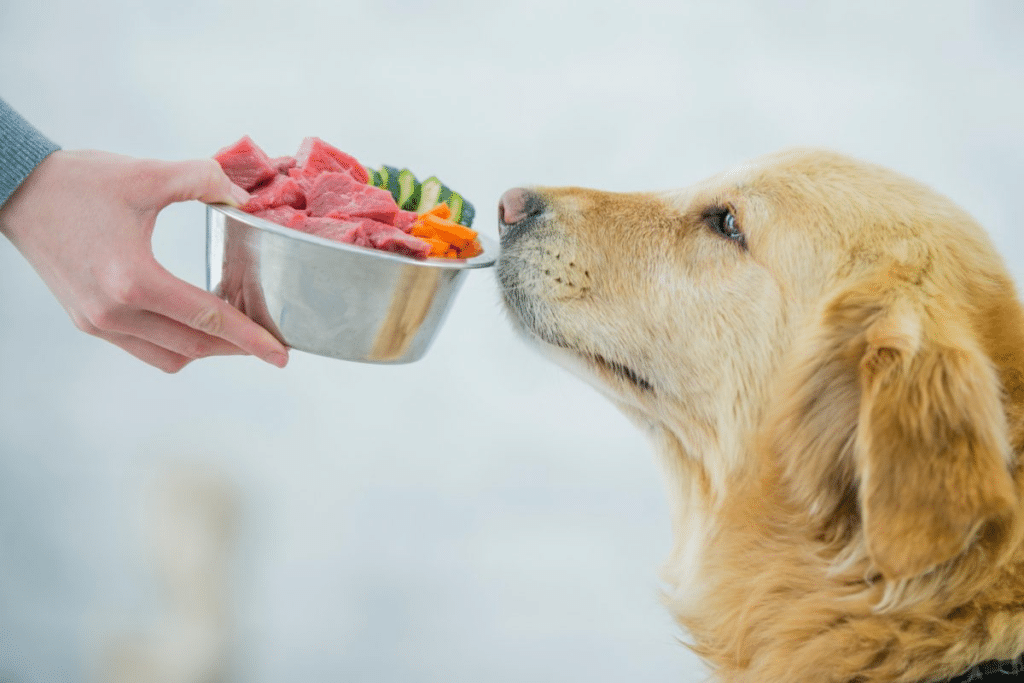
Causes of nausea and vomiting in dogs
Nausea and vomiting in dogs can occur for a variety of reasons and can often be avoided or alleviated by knowing the underlying factors. Let’s look at the most common ones so that you can better understand your pet and help him in time.
- Overeating or fast eating. When a dog eats too quickly or consumes large portions, his stomach simply does not have time to cope with the food or air that enters during eating. This can cause nausea or even regurgitation of food.
- Improper nutrition. Sudden changes in feed or feeding inappropriate foods, such as fatty or spicy foods, can cause upset stomach.
- Poisoning. Dogs are very curious, so they can accidentally eat something harmful during a walk or at home. These can be poisonous plants, household chemicals, or even familiar products such as chocolate, onions, or grapes. Symptoms of poisoning may include not only vomiting, but also diarrhea, weakness or tremors.
- Gastritis and other diseases of the gastrointestinal tract. Frequent episodes of vomiting can be a sign of gastritis, ulcers or intestinal inflammation. If these problems are accompanied by a lack of appetite, abdominal pain or lethargy, you should consult a veterinarian.
- Vermin. Internal parasites such as worms can cause nausea and vomiting, especially in young dogs. Parasites irritate the stomach and intestines, which causes digestive problems.
- Infectious diseases. Some viral and bacterial infections can cause severe vomiting. These illnesses are often accompanied by high fever, diarrhea and weakness, and require immediate medical attention.
- Intestinal obstruction. If the dog accidentally swallowed a foreign object (toy, bone), it can cause intestinal obstruction, which is manifested by vomiting, lack of defecation, lethargy. This is a very dangerous condition that requires immediate veterinary intervention.
- Kidney or liver disease. Diseases of internal organs, such as the kidneys or liver, can also cause nausea and vomiting. Other symptoms may include weight loss, increased thirst, and changes in urination.
- Motion sickness. Just like people, dogs can experience discomfort when traveling in public transport. Motion sickness can cause temporary nausea and vomiting, but this is usually not a serious problem.
- Stress and anxiety. Nausea in dogs can be caused by stressful situations. For example, a change of environment, fear of loud sounds or moving can cause not only emotional discomfort, but also physical manifestations in the form of nausea and vomiting.
If your dog vomits infrequently and the cause is obvious (for example, he ate too quickly), it is usually not a cause for concern. However, if vomiting lasts more than a few hours or is accompanied by other symptoms, such as diarrhea, lethargy, or a high fever, it may be a sign of a more serious problem.
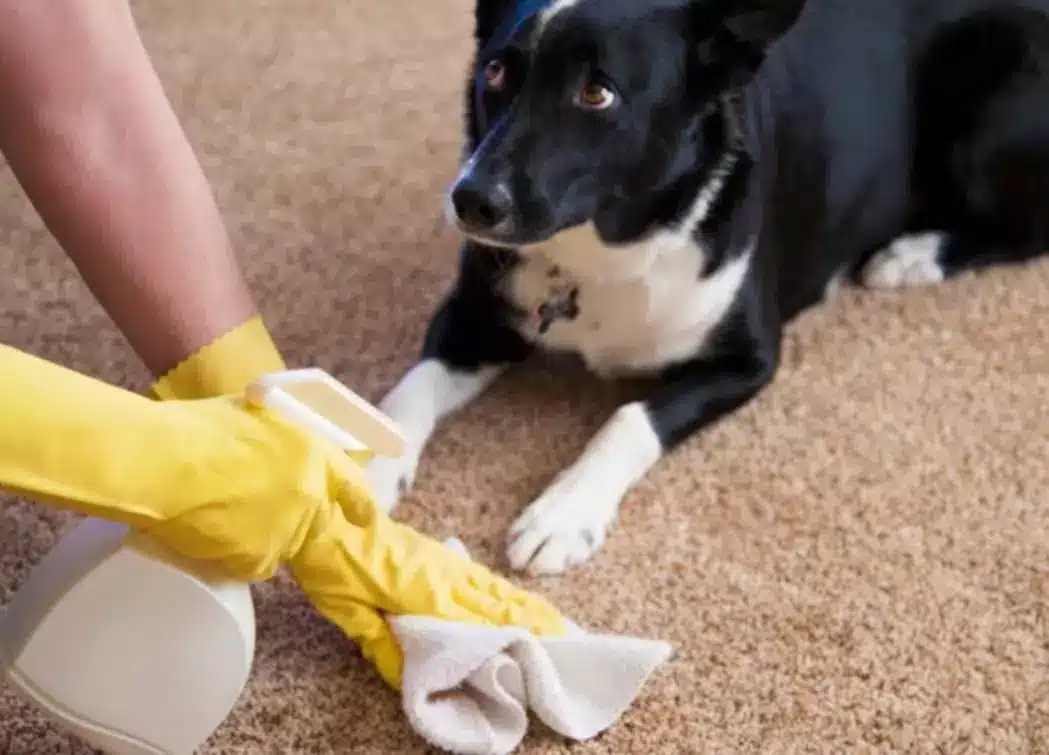
How to help a pet?
If you notice your dog feeling nauseous or starting to vomit, it’s important to act quickly. Here are some useful tips to help ease your pet’s condition.
- Provide rest and access to fresh water. After vomiting, the dog may feel weak, so it is necessary to give him the opportunity to rest in a quiet place, without excessive noise and movement. Provide your pet with access to clean water, but be careful: do not give a lot of water at once, so as not to provoke another attack. Offer small portions of water at intervals so that the animal’s body can respond normally.
- Do not feed immediately after vomiting. After an episode of nausea or vomiting, it is important to give the dog’s stomach a rest. It is best to wait 6-12 hours before offering food again. This will allow the stomach to recover and reduce the risk of repeated irritation. When the time comes, start with small portions of light food to see if it is digested normally.
- Observe the condition of the dog. If vomiting only happened once and your pet is fine, it could be a reaction to something minor, such as accidentally eating something harmful while out for a walk. But if vomiting continues or is accompanied by other symptoms (lethargy, diarrhea, or even blood), this is a serious reason to consult a veterinarian.
- Check for toxins. Consider whether your dog could have accidentally eaten something harmful. Foods such as chocolate, onions, garlic, and grapes are dangerous for dogs. They can cause not only nausea, but also serious, life-threatening poisoning.
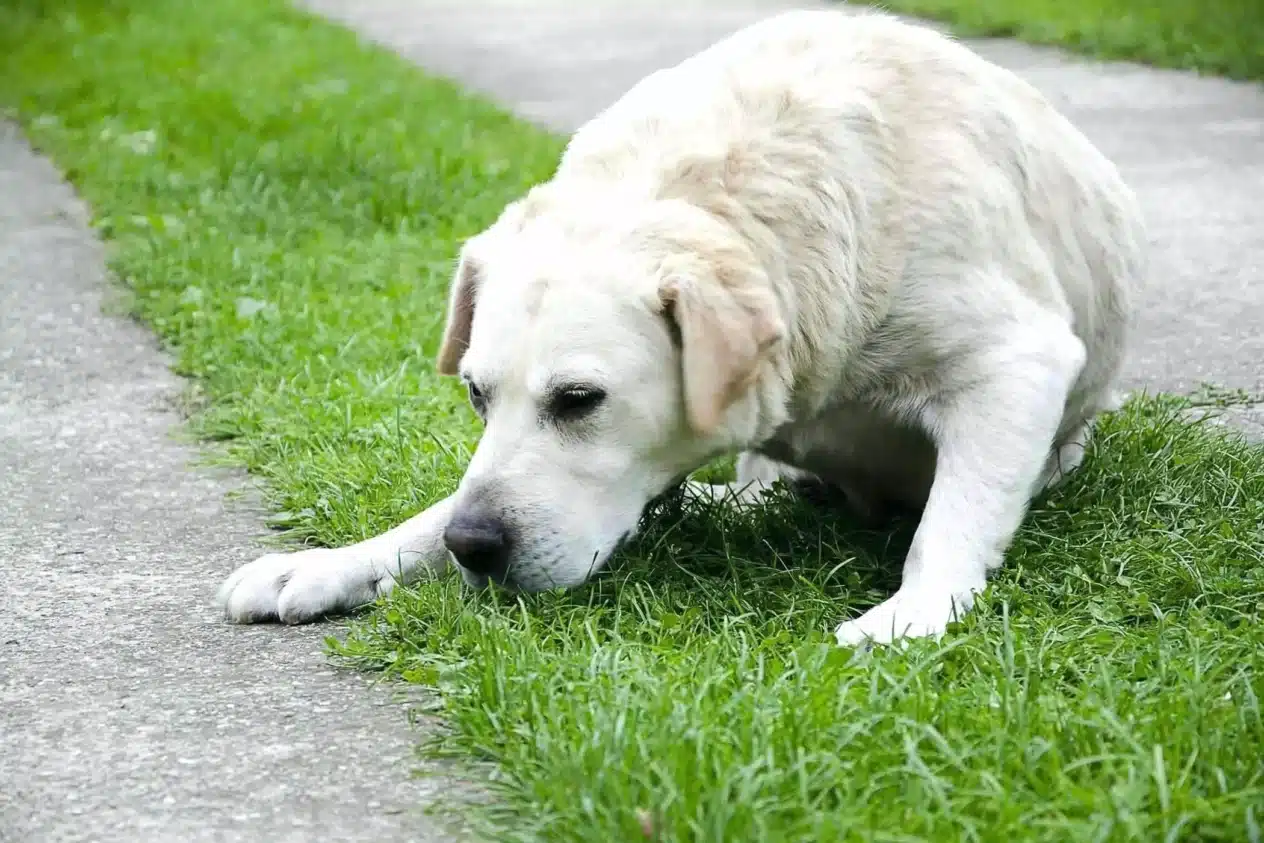
When should you consult a veterinarian?
Vomiting in dogs can be a signal of both minor ailments and serious diseases that require immediate veterinary intervention. It is important to understand when you need to act on your own, and when to urgently seek professional help, so as not to expose your pet to danger.
When to contact a veterinarian immediately:
- Frequent or prolonged vomiting. If the dog vomits several times a day or for more than one day, this is a serious signal. Such a situation may indicate stomach problems, poisoning or infections that require medical attention.
- Blood in the vomit. If you notice blood in your vomit (bright red or dark, like coffee grounds), this could be a sign of internal bleeding or an ulcer. Such a condition requires immediate intervention.
- Accompanying symptoms. Lethargy, diarrhea, high fever, convulsions, or loss of appetite along with vomiting may indicate an infection or serious illness. It is especially dangerous if the dog becomes apathetic or cannot move.
- Inability to retain water. If, after vomiting, the dog cannot keep down even water, this is a warning sign of dehydration, which can quickly become critical for puppies and older dogs.
- Abdominal bloating. If abdominal distension is noticeable along with vomiting, this may indicate gastric volvulus, an extremely dangerous condition that requires immediate surgery.
- Absence of defecation. If vomiting is accompanied by the inability to defecate, this may be a sign of intestinal obstruction. Such a condition requires urgent diagnosis and, possibly, surgical intervention.
Timely contact to the vet can save your dog’s life. Symptoms that may seem minor at first glance may indicate critical conditions.

What to do when you need immediate help:
- Prepare the information. Write down when the vomiting started, how often it recurs, and if there are any other symptoms. These details will help the vet make a diagnosis faster.
- Avoid self-medication. Do not try to stop vomiting yourself by giving your dog human medication. Some medications can worsen the animal’s condition.
- Transportation to the clinic. If the dog’s condition is critical, take it to a veterinary clinic quickly. Make sure your pet is comfortable during transport and is lying down in a safe position.
Do not ignore alarming symptoms and always be attentive to the condition of your pet! Proper nutrition, care and prevention will help reduce the risk of these problems.


